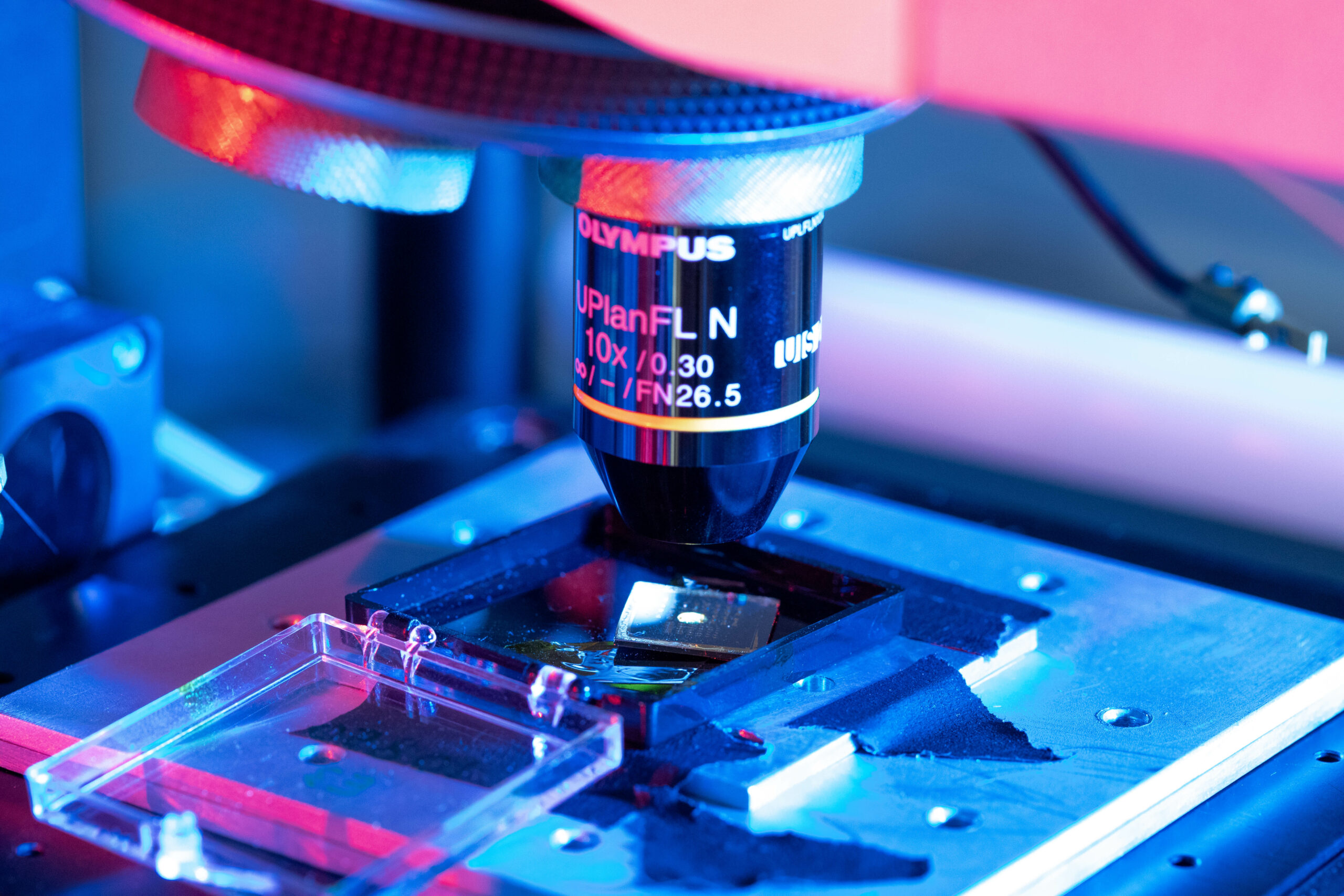
Shortwave infrared vision chips can see through rain, fog, or haze. Aviation security and autonomous vehicles sectors have already implemented them in their systems. However, this technology could come in handy in many other daily applications, but the high costs limit its usage. A group of European researchers – from Politecnico di Milano, Italy, and Forschungszentrum Jülich (FZJ), Germany – designed a cost-effective infrared detector. Existing camera chips and smartphones would be able to integrate it.
Several layers of semiconductor materials containing germanium and germanium-tin make up the device, and the base is made of a thin silicon wafer. As a result, it makes two important infrared ranges visible: shortwave infrared (SWIR) and near-infrared (NIR). This way, without any optical element, two different spectral images – both complementary – can be obtained from the same device.
“Making infrared technology cost-efficient so that it can be applied in several fields is one of our goals”, says Prof. Giovanni Isella, from Politecnico di Milano. The idea of a detector came out of the partnership between his university and Roma Tre University. The two Italian universities previously designed another prototype with different kinds of materials. Then FZJ became interested in the project and joined the research, developing the germanium-tin semiconductor alloy that makes up the device.
Growing germanium
“The most important thing that we have developed at Jülich is the epitaxy – how to grow a material. Once you have the material, you can think about different types of devices that you would like to make”, adds Dr. Dan Buca, from Forschungszentrum Jülich.
The German research institute first succeeded in growing germanium. “It is a good artificial material, but nobody was ever able to make it before with the crystallinity that is needed. In 2015 we found a way to make germanium tin with a high enough concentration of tin”, explains Prof. Detlev Grützmacher, FZJ’s director. With a silicon substrate, the device can be easily integrated into existing systems, making it useful for many applications.
Materials recognition
One of the experiments carried out by the researchers consisted of testing the detector with two bottles. One was filled with isopropanol, while the other contained toluene. “Under regular light conditions, they both look colorless, and you might therefore think that they are two water bottles. When you see them under the two infrared ranges, each one of them shows a different opacity level. If you subtract the two infrared bands, you’ll see the difference between the two solvents”, explains Prof. Isella.
Integrating the device with AI to detect materials is another potential application. Airport security would be one of them. Connecting the detector to AI could also lead to new facial recognition systems.
“One advantage of NIR-based sensing systems is that they aren’t affected by weather or ambient lighting conditions which affords more accuracy”, says Dr. Buca. Smart Home security systems would therefore be another potential application in the close future.
Another feature of the device is its ability to see through ink. “Most inks look opaque to the human eye. Yet under infrared light, some of them look transparent. This could help in detecting fake banknotes”, notes Prof. Isella.
Furthermore, the detector is also able to see through paint layers. These semiconductor layers can produce individual pixels for digital cameras. Every pixel captures the same image in the different infrared ranges of the spectrum.
Automotive
Embedding infrared technology in cars is nothing new, but the high costs did not allow for the implementation of this on a large scale. “The human eye cannot see infrared light. Therefore, a good solution would be using it in cars as night lights. This way, vehicles could see the road at night without blinding the other drivers”, explains Prof. Isella.
In addition to the ability to see through fog and rain, infrared technologies could be useful within the automotive segment because of their ability to recognize materials. “Self-driving cars need to be able to read signs in all weather conditions. They need to see where the edges of the street are. They do it now but with the aid of a visible camera”, clarifies Dr. Buca.
Medical applications
Infrared (IR) is full of information regarding the surrounding atmosphere.A lot of the research that uses the NIR-SWIR range addresses gas detection for environmental (pollution) but also medical applications.
According to research conducted by Sichuan University, breath carries information about our health. If it contains too much acetone you might have diabetes, if there is a lot of ammonia (NH3) your kidneys might be diseased.
Particularly for people suffering from diabetes, in the future, it could be possible for them to blow onto their smartphone and using a calibrated detector to measure the amount of sugar in their blood.
Many other applications of the device might eventuate as the germanium and tin materials and technology are completed. At the moment, the detector has only been tested in laboratory conditions, connected to several technical devices. Making it portable and integrable will be the next step, as the consortium together with other European partners is applying for funding to keep developing their technology further.
Foto: The system used for double range detector characterization –
Also interesting: An affordable microscope for invisible infrared light

